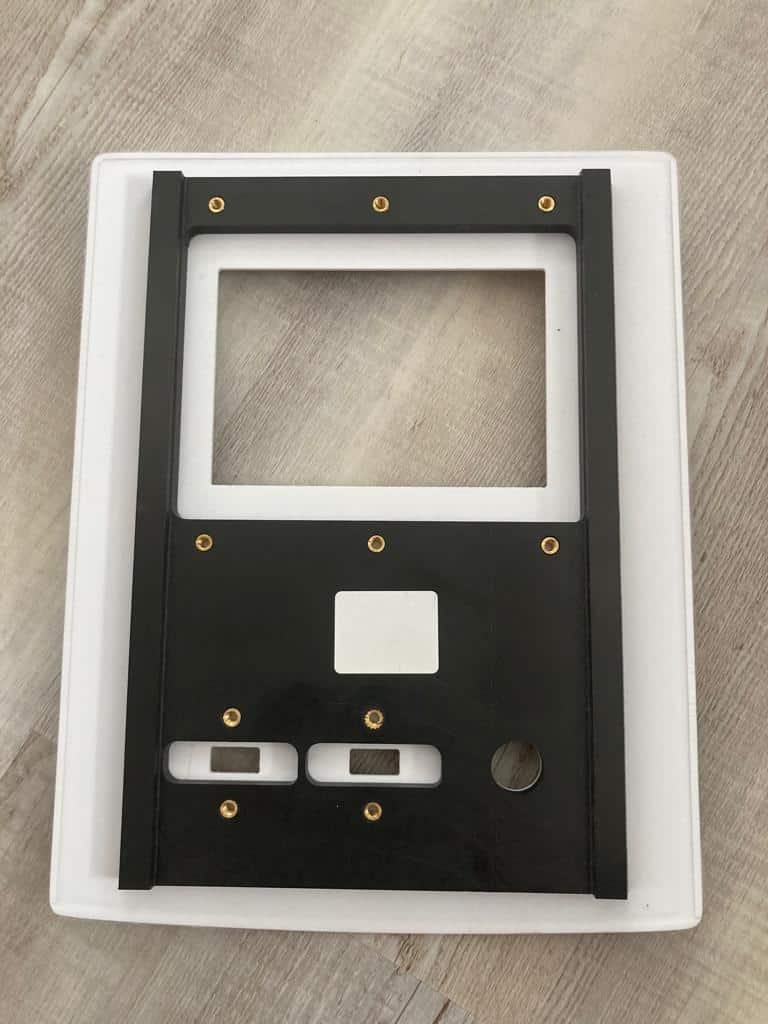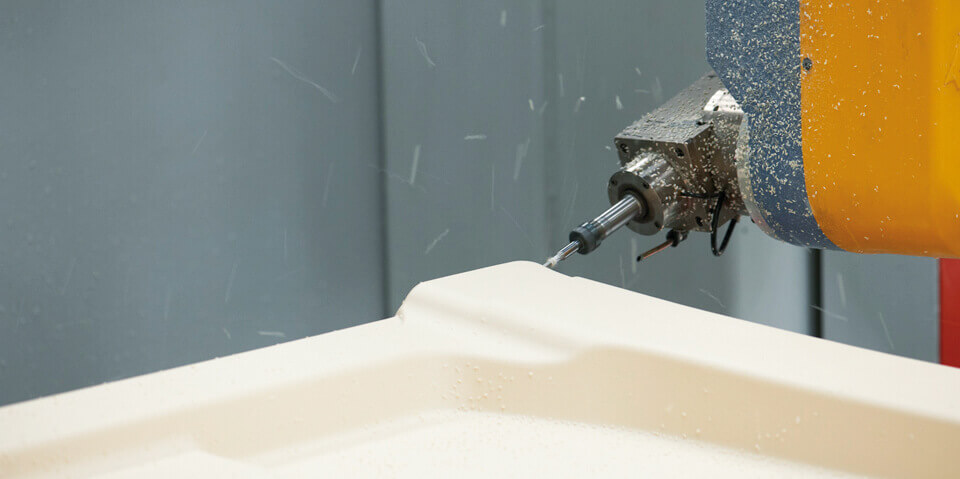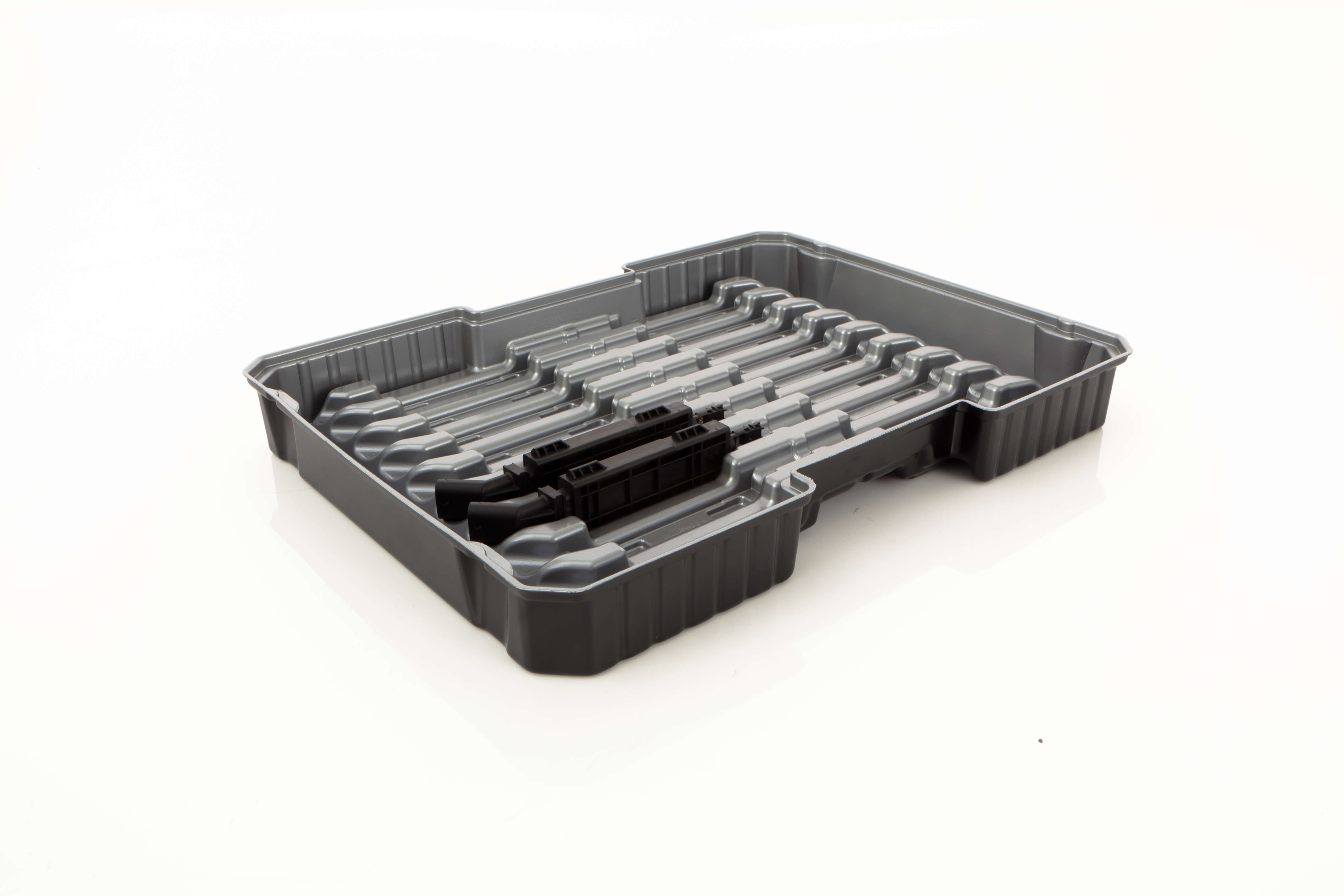Plastic instead of sheet metal
Technology
Technology
Replacing sheet metal with plastic
Sheet metal parts are often replaced by plastic cladding due to their lack of flexibility and heavy weight. Plastics stand out not only in their versatility, but also in their processing possibilities and durability. Thanks to our high-precision and accurate working methods of deep drawing and CNC milling, there are almost no limits to the design of plastic cladding and plastic components.
Full design freedom thanks to plastic
The use of plastic as a material brings with it a wide range of advantages. The biggest one is the freedom of design of the material. Thermoforming allows us to realise almost any shape with dimensions up to 3000 x 2000mm. The thickness of the plastic can range from a fine 0.2mm to a robust 14mm. We also frequently use twin-sheet moulding, which allows the joining of two (almost) identical moulded parts to increase stability. In addition to the thickness of a plastic moulded part, we also offer a free choice of grain and surface finish. Surfaces with graining, with a matt finish or with a full gloss finish are no problem for us.
Furthermore, plastic as a material often performs better than wood, metal or cardboard in many categories: In addition to the inexpensive, fast and flexible production, plastic is also convincing due to its robustness, various resistances and the low mass of the finished parts. The reduction in weight is worthwhile because less energy has to be used both during transport and storage and when used as a moving component in a machine, which in turn saves costs.

Sheet metal in industry
The use of sheet metal parts in the industrial sector has a long tradition. For more than 200 years, sheet metal has been the preferred material for making cladding, panelling or covers. However, having arrived in the 21st century, the trend is increasingly moving away from sheet metal and towards plastic. The various advantages of plastic components outweigh the disadvantages, as a result of which plastic is gradually replacing sheet metal as a working material. swissplast supports you and your company in the transition from sheet metal components to plastic components.
Sheet metal and sheet metal cladding for machines and vehicles have a long history. However, sheet metal processing also has its limitations and disadvantages – in particular the individualisation of components, in terms of colour and shape, is difficult with sheet metal components. In addition, the weight of sheet metal parts can impair performance. Plastic parts, on the other hand, are light, robust and durable. They are also highly customisable and adaptable.
Benefits of plastic in contrast to sheet metal
Versatile processing
Favourable price
Less energy required for raw material extraction and production
Low weight
Durability
Robustness and weather resistance
Impact strength
High customisability
Plastic instead of sheet metal in heat pump technology
One industrial sector that can be used to illustrate the change from sheet metal parts to plastic parts is the manufacture of heat pumps. In the conventional manufacture of heat pumps, sheet metal is often still used for covers, while other companies have switched to plastic for the same component. In the picture you can see the comparison of such a cover made of sheet metal (left) and plastic (right, produced by swissplast). The component was replaced with the same robustness and lower mass.

Replacing sheet metal parts – the way forward
Sheet metal is no longer the only material used to manufacture machine components. Plastic parts have various benefits over their sheet metal counterparts. Plastics are lighter and thus promote lightweight construction. This is useful in that the respective machines can be operated with less power, which in turn can save energy. The reduction in weight is also an enormous benefit for the production and use of transport packaging.
In addition, with plastic, individual design wishes and requirements can be met with greater precision, which increases the efficiency of the products.
The deep drawing process allows us to work with a wide range of plastics and adapt them entirely to your requirements. No matter whether they are manufactured for mechanical engineering, automotive construction or medical technology, we work with the highest precision and a low error rate of less than 0.3 percent.
Disadvantages of sheet metal
Metals are still used in industry today. Sheet metal parts are used in automobile construction, mechanical engineering, packaging technology and household appliances.
However, metals and sheet metal have disadvantages compared to other building materials.
- Risk of expansion due to poor workmanship
- High price
- Poor thermal insulation
- Weather intolerance and rust
- Risk of mould growth
- Stiff building material/susceptibility to damage
- Few customisation options
Sheet metal parts and plastic parts
Sheet metal as a material is widely used in industry: as sheet metal cladding and sheet metal panelling, as sheet metal intermediate layers, sheet metal covers or sheet metal panels. However, the use of sheet metal entails a number of disadvantages. This already starts with the extraction of the raw materials: producing metals is very labour- and energy-intensive, which in turn leads to poor environmental compatibility and high material prices. In addition, sheet metal parts are heavier than plastic parts and they deform more easily than plastic parts. Furthermore, sheet metal cannot be machined and customised as precisely as plastic. This already makes plastic a durable and sustainable alternative that often replaces sheet metal in industrial use.
Replacing sheet metal cladding
It is not a big change to replace sheet metal cladding and use plastic cladding. The benefits of using plastic instead of sheet metal are obvious: On the one hand, plastic is cheaper to produce. This is due to the lower material costs and the faster and more energy-saving processing. On the other hand, plastic parts are more sustainable than sheet metal parts. Although both can be recycled, the recycling of sheet metal and other metals requires the application of high heat. Plastic, on the other hand, can be shredded and reused as recycled granules. Another strength of plastic is its malleability. Plastic can be processed much more finely, which means that the finished plastic parts can be better used for the purpose in question.
Plastic instead of sheet metal
Since the introduction of plastic for industrial purposes in the 20th century, it has replaced older materials such as metal in many places. Plastic has prevailed for many applications and impresses with its robustness, durability, customisability and low manufacturing costs at high production speeds. swissplast recognised this change early on and has since grown to become an outstanding expert in the plastics processing industry as well as a market leader. We manufacture plastic parts, plastic cladding or plastic panelling for you, which have great benefits over sheet metal parts, sheet metal cladding or sheet metal panelling. We can produce stable and sustainable plastic parts for your project with the highest precision. Let our professionals advise you on the extent to which the use of plastic parts is worthwhile for you.
Further areas of interest










